Excerpts from Jim Conrad's
Naturalist Newsletter
Entry from field notes dated June 30, 2023, from along narrow, very steep, cobblestone road descending on the south side of El Doctor, passing among cultivated fields and pastures; in the mountains of east-central Querétaro state, municipality of Cadereyta de Montes, 12 straight-line kms due east of Vizarrón de Montes but much farther by twisting roads; elevation ~2740m (~8900 ft), Querétaro, MÉXICO, (N20.84704°, W99.58573°)
ELECTRANTHERA MUTICA
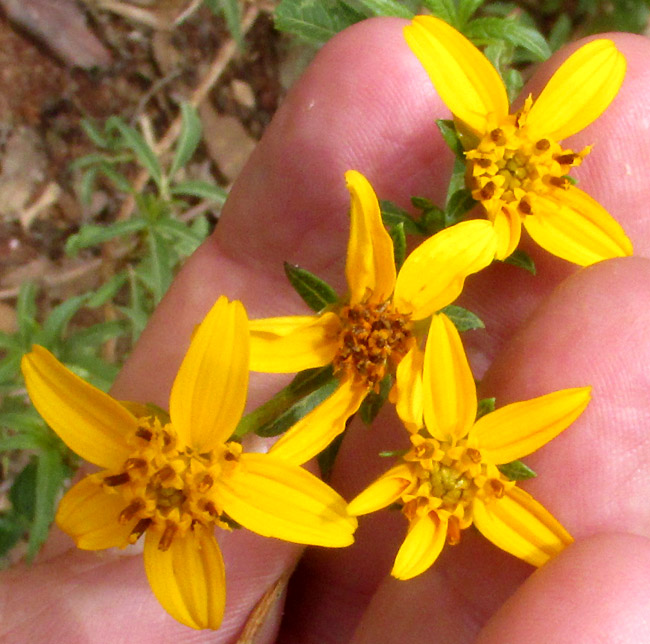
With small, cylindrical florets crammed together to form the above flowering heads' "eyes", and petal-like ray florets radiating outward, the above floral structure announced yet another species of the mind-bogglingly numerous, yellow-flowered members of the vast Composite/Aster/Sunflower Family, the Asteraceae. To figure out which species it is, you really have to "do the botany." Main field marks to note above are that both disc and ray florets are present, and they're both yellow, which already disqualifies many possible species it could have been.
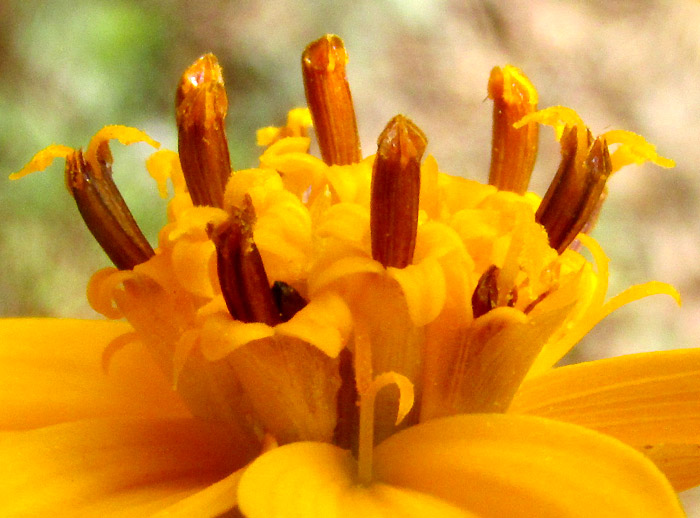
Above, the brown items are the disc florets' five anthers united into cylinder surrounding the style branches, which on older florets at the cluster's margins have expanded to form Y shapes. At the picture's bottom, note that the Y-shaped forked styles arising from the throats are well formed but lack brown anthers around them. Later this obscure observation proved to be critical for determining the species.

Below the flowering heads, the involucre were very different from the vast majority of members of the Aster Family. Above, note that each head, or capitulum, is subtended by five green, fleshy bracts, and between each pair of bracts arises a much larger, wider and yellowish bract. A cluster of genera produce involucral bracts separated into two, strikingly dissimilar series, the best known genera containing species of cosmos, coreopsis, dahlias and the Spanish needles or beggarticks, all members of the Aster Family tribe Coreopsideae.
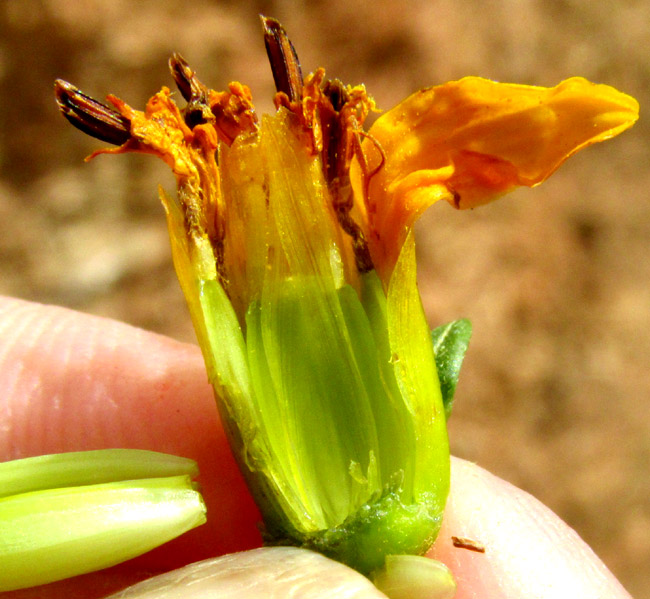
Above, a broken-open capitulum exposes slender ovaries -- the future cypsela-type fruits -- separated from one another by scoop-shaped scales called paleae, which is to be expected for the Coreopsideae tribe. Often, members of that tribe bear needle-like bristles atop their cypselae, but above I see no hint of that. 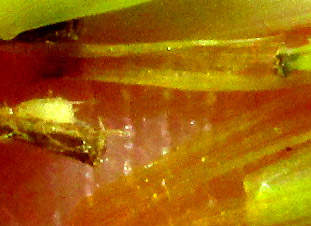 However, the picture at the right shows part of the debris resulting from crumbling a capitulum. On the image's left side, a white cypsela top is seen with very tiny, slender bristles which might grow as the fruits mature. In the picture's top, right corner, the darker green item is a less mature cypsela-top bearing what looks like even less developed bristles.
However, the picture at the right shows part of the debris resulting from crumbling a capitulum. On the image's left side, a white cypsela top is seen with very tiny, slender bristles which might grow as the fruits mature. In the picture's top, right corner, the darker green item is a less mature cypsela-top bearing what looks like even less developed bristles.

Above it's seen that leaves were trifoliate -- divided into three leaflets -- and they arose in pairs at stem nodes. The leaflets' margins are saw-toothed.

Our plant was a bush with many branches, with the lower stems semi-woody, as shown above. The stem is sprouting a new branch, and the young leaves' bottoms bear a few long, soft hairs. Here's what our bush looked like along the road, next to a roadcut into the limestone:
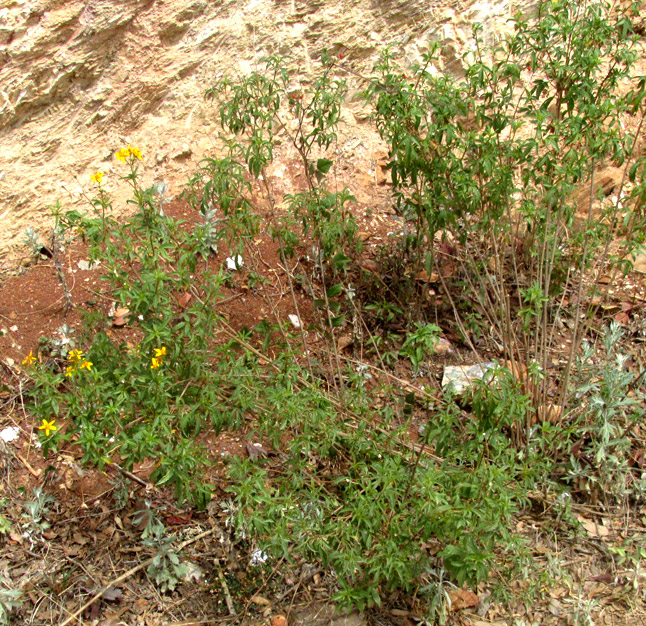
Originally I identified this plant as Bidens ostruthioides, but when I added the pictures to iNaturalist.Org, Oscar González at the Autonomous University of Chapingo thought it was ELECTRANTHERA MUTICA. I'd never heard of the genus Electranthera. However, I see that that genus was created only 2015, and the Flora del Bajío treatment of our plant's tribe which I use is dated 2008. Oscar specializes in the Aster Family and has the latest information, so I'm sticking with his identification.
Electranthera mutica, under the name Coreopsis mutica, occurs from the uplands of central Mexico south to about El Salvador and Honduras. The GBIF database at this writing doesn't recognize Electranthera mutica, so there seems to be a debate about the name.
As such, I'll leave the situation at that, and hope our pictures are useful to the experts as they settle the matter.